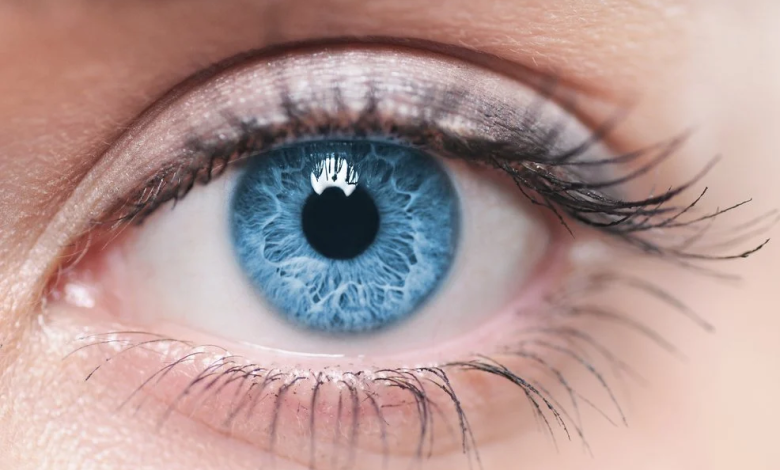Pupil Examinations: What Are They And What Can They Detect?

It isn’t often that people think about eye examinations, aside from when they notice that their vision is worse than it used to be. In many cases, your eyesight will deteriorate so gradually you won’t even be aware of the change until it’s too late. This blog aims to help people understand what they should expect during a professional pupil measurement and eye examination.
Examination of pupils
Compare the sizes of the pupils in the light and the dark
Light and dark examinations should be conducted on each pupil. An eye-to-eye assessment of the pupillary size measurement is essential. Observe the patient’s pupils via a side illumination after fixing their gaze on a distant object.
When there is an imbalance in the size of the pupils, it referred to as anisocoria. Only around 25% of people have physiological anisocoria, defined as a variation in size of more than one millimetre. There is a more significant distinction, namely pathological anisocoria. Pupils with pathological reactivity have difficulty contracting to light and have trouble dilating in the dark. When it comes to establishing which of two pupils is abnormal, it’s best to look for a larger or smaller pupil in light or darkness, respectively.
Direct and consensual light reflexes
A typical light reaction causes both pupils to constrict (direct and consensual reflex) when exposed to light. To begin, look for a constricting pupil in response to direct light. Keep a watch on the other eye, though, since the pupil there will constrict even if no light is shining (consensual pupillary light reflex). Light reflex afferent or efferent pathway abnormalities may creates in this method.
Swinging flashlight test/relative afferent pupillary defect
In order to identify an afferent deficiency, this test used. An aberrant pupil may widen in response to rapid shifts in light intensity. A constricting pupil will constrict under normal lighting conditions. When the light returns to the normal pupil, the normal pupil will contract again since the abnormal pupil had no consensual reaction. In medical terms, this symptom characterized as an “afferent pupillary defect relative” (RAPD).
If both optic nerves are damaged, an RAPD may still diagnosed since, in most situations, the damage is not equal. Hence, the optic nerve with the larger damage manifests as a RAP. Both pupils may display delayed responses to light in rare circumstances when the degree of injury to both optic nerves is almost identical. Retinal detachment, significant unilateral macular lesion (or severe unilateral glaucoma), and compression of the optic nerve (optic neuritis, optic nerve compression) are all possible causes of RAPD.
Accommodation
Lastly, a patient’s capacity for accommodation may evaluated by having them concentrate on a far location and then rapidly move their attention to a closer one. In normal circumstances, the pupil contracts and the eyes converge when a close object focused on. However, this term is only uses in tests; in real life, pupils who constrict due to neurosyphilis but not when exposed to direct light stimulation have “Argyll Robertson pupils.”
What can a pupil examination detect?
1. Third nerve palsy
Either a full or partial paralysis of the third nerve may occur. Ptosis is complete, the pupil dilates to maximum, and there is no restriction to light or accommodation. If you shine a light into the affected eye and see that the pupil does not contract, but the consensual light response in the contralateral pupil is intact, you’ve found the lesion to be in the efferent pathway of the brain. Microvascular infarction — blockage of the vasa nervorum (risks: hypertension, diabetes, atherosclerosis), compressive lesion (aneurysm, tumour) or trauma are possible causes. The symptoms of a partial third nerve palsy are less severe, but they might indicate an oncoming disaster.
The third nerve is often compressed against the crest of the petrous temporal bone by rapidly rising intracranial pressure after an acute extradural or subdural haematoma. Pupil dilation occurs gradually on the afflicted side because parasympathetic nerve fibres are located close together and so suffer first. A CT angiography to screen for intracranial aneurysms is virtually always suggests when there is an urgent need for surgical decompression of the brain due to pupillary dilatation (PD).
2. Acute angle-closure glaucoma
Anterior chamber angle closure occurs when the pupil is semi-dilating, and the iris is crowding it. An intraocular tumour, the development of anterior or posterior synechiae after uveitis, or rubeotic glaucoma induced by fibrovascular growth in the chamber angle due to retinal ischaemia might all be to blame (diabetes and central retinal vein occlusion classically). Ocular emergencies such as these must have validated with a slit-lamp examination. Which can only performed with proper training and experience. Referrals to an ophthalmologist are necessary for those who have this problem. It is possible to list these individuals for iridotomy or peripheral iridectomy after decreasing intraocular pressure with medications, topical miotics, and eye drops.
Anterior uveitis
Anterior uveitis is most likely the cause of a patient’s blurred vision, tiny irregular pupils, and red, painful eyes. On the slit-lamp examination. The diagnosis is easy to make: an acute episode will reveal ciliary injection, endothelial dust, aqueous cells, anterior vitreous cells. And in severe instances, hypopyon and posterior synechiae. Anterior uveitis recurrence is associated with a non-dilating, painless, irregular mitotic pupil. Colour deposits on the lens, keratoprecipitates and in some instances. Iris nodules and atrophy, may be visible on the slit-lamp examination.





